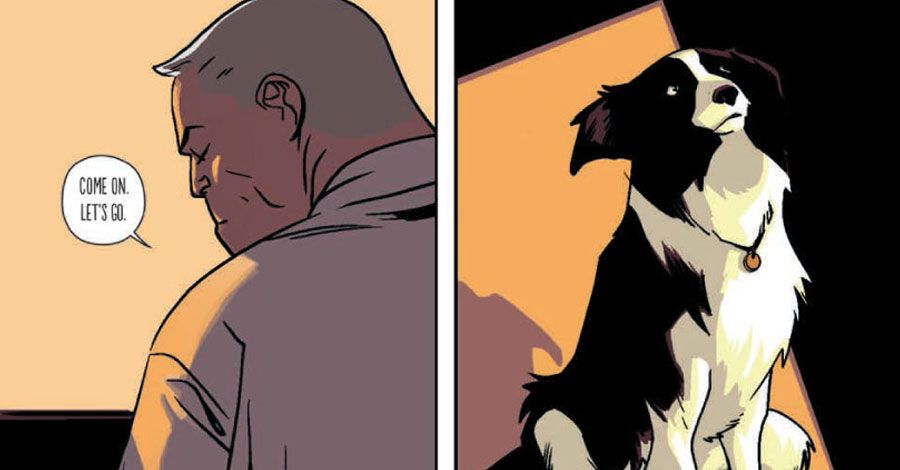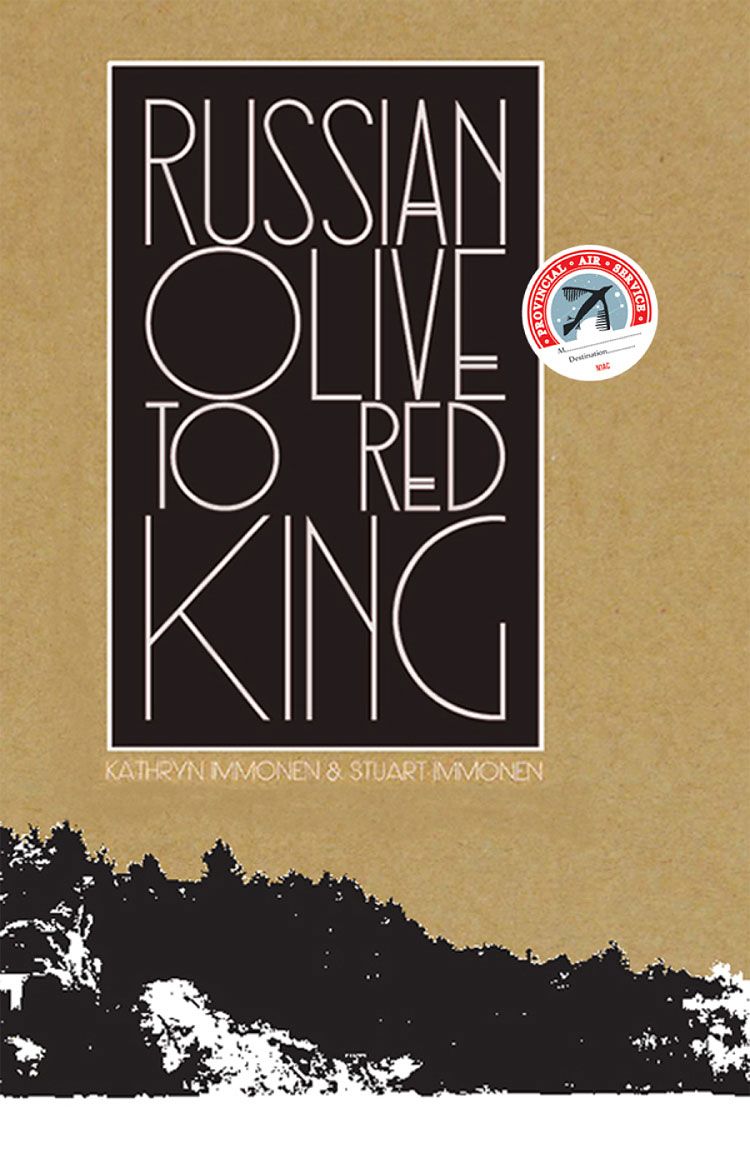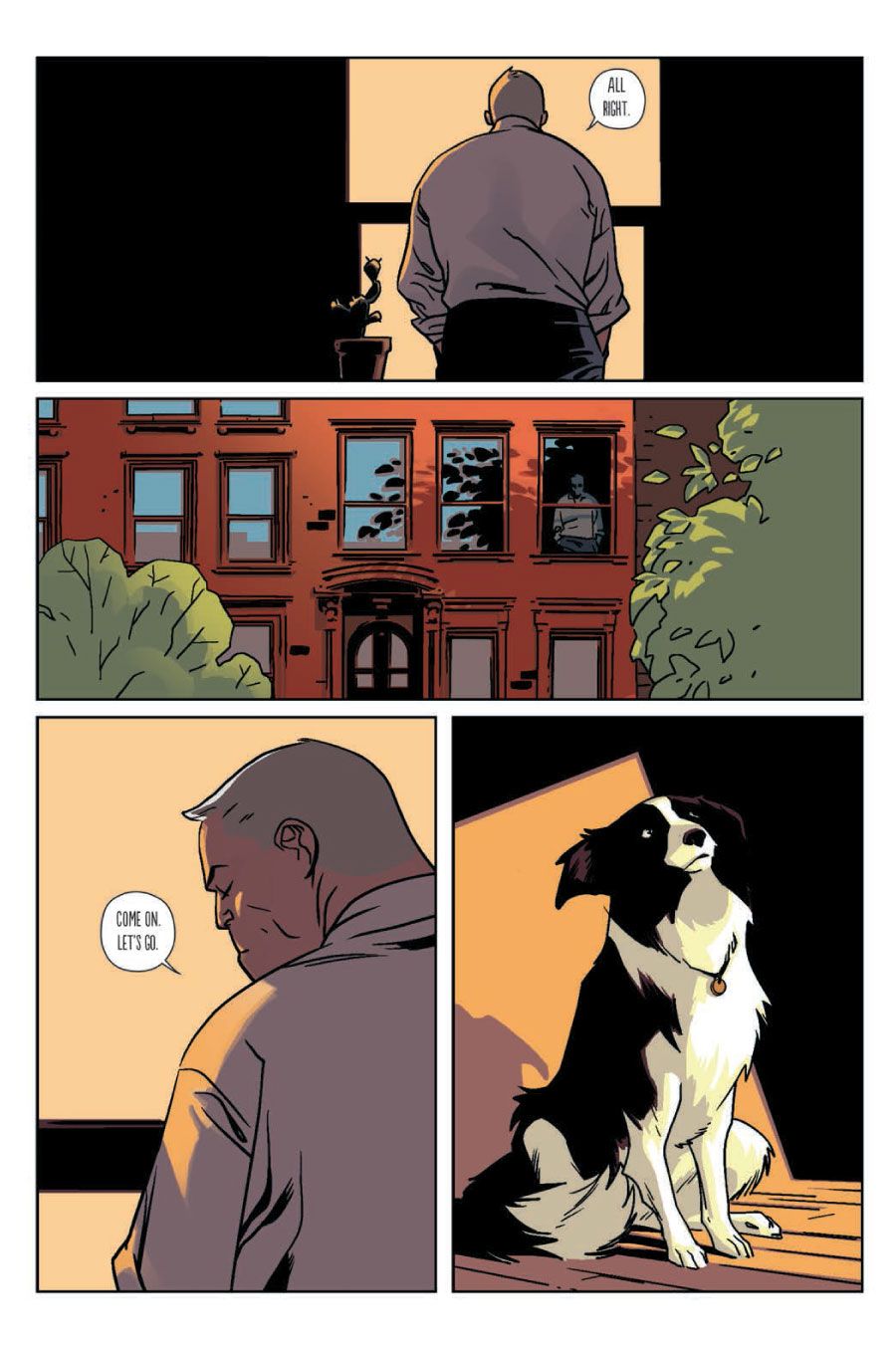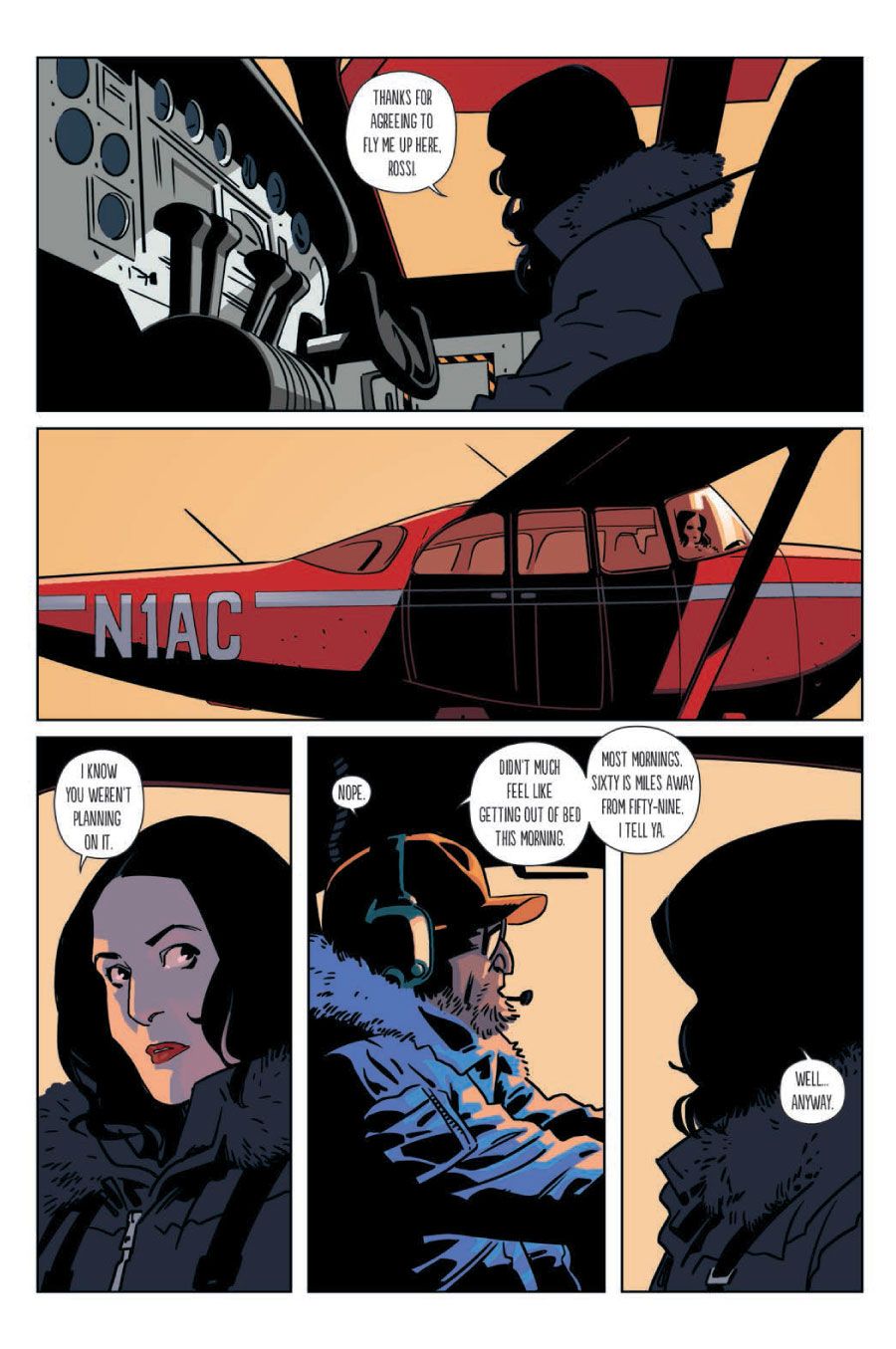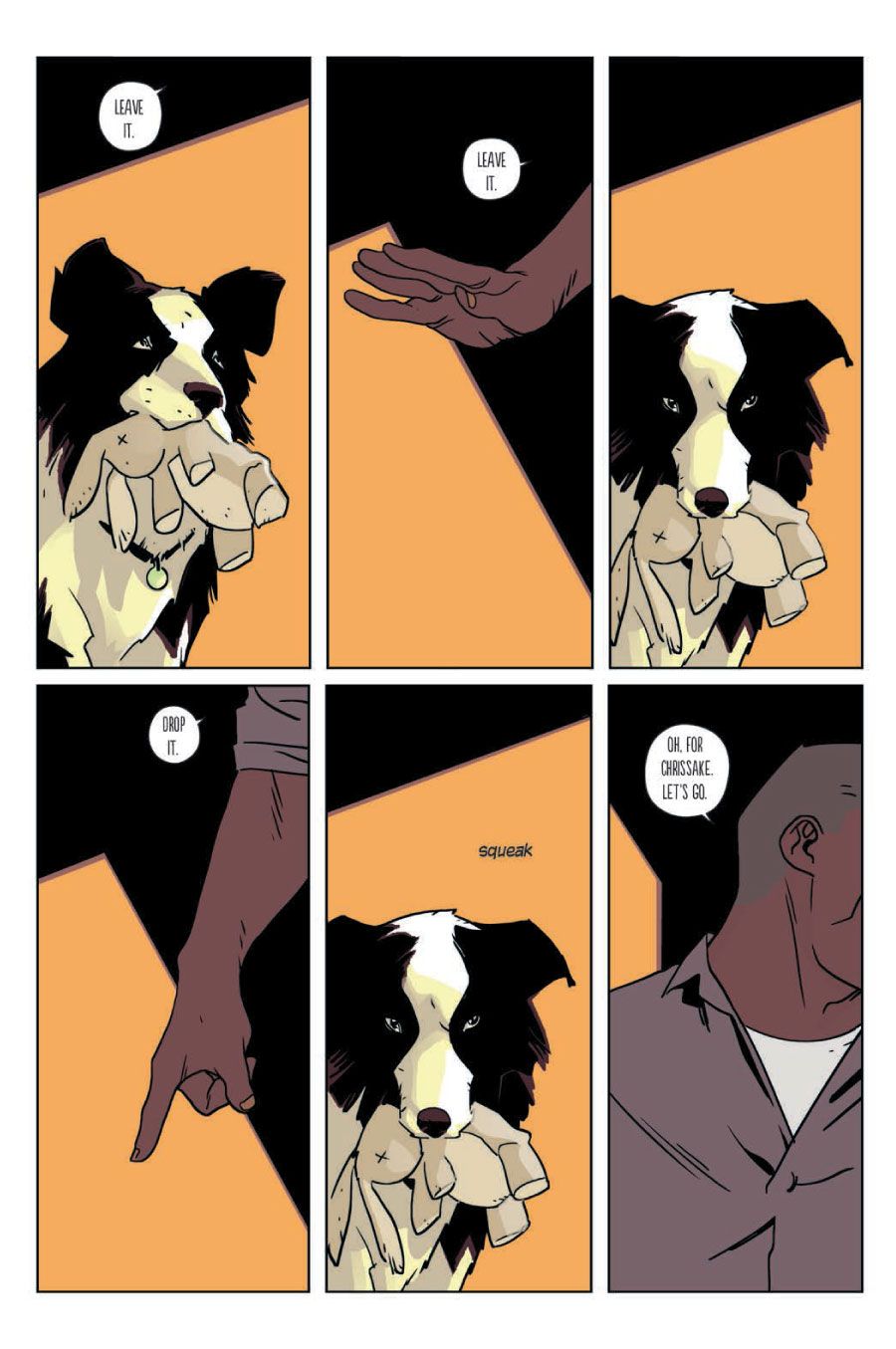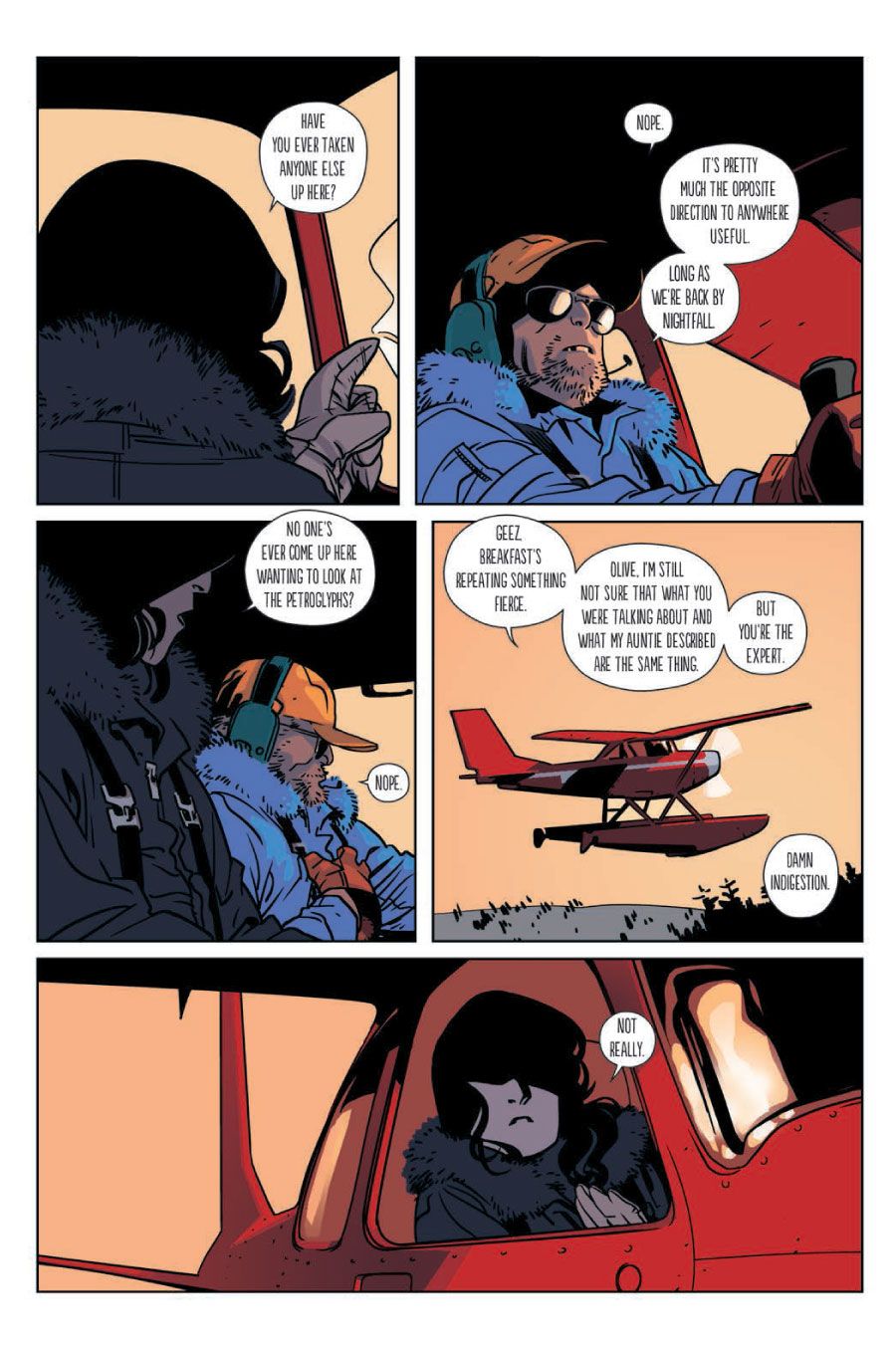Kathryn and Stuart Immonen are very busy people.
The married comic book creators has been working together for years, from "Moving Pictures" and "Never As Bad As You Think" to "Snipe" and their short WWI-based comic "I Looked Up From My Writing." Of course, they're probably best known for their Marvel Comics work, Kathryn most recently writing "Operation S.I.N." while Stuart drew "All-New Captain America" and is slated to take over "Star Wars" this summer.
Their latest collaboration is "Russian Olive to Red King," a book the creators tell CBR News represents a conscious effort to tell a different sort of story, one that is beautiful to look at, thoughtful and genuinely heartbreaking. The couple spoke with CBR about the book's highly personal origins, and why it took them years to complete.
CBR News: Where did the idea for "Russian Olive to Red King" originate?
Stuart Immonen: Kathryn was doing a residency in upstate New York and mobile phone reception was terrible, so we couldn't really talk for the two months she was away. I began sending her a daily illustrated story by email instead. I think a couple of years went by, and I suggested to her that she might work it up into a story somehow, and instead of using either the text or the images from the emails I'd sent her, she instead wrote a story about what prompted the emails, about separation.
Kathryn Immonen: Stuart doesn't mention that the real motivation behind this romantic gesture was just his wanting to improve his Illustrator skills.And I have to tell you that we're sitting together on the couch right as I'm typing and neither of us can really remember the order of the pieces. I think Stuart wanted me to write something that incorporated the images, and the result was the front half, the comic half. Once that was written, the set of original images became unhooked from the narrative we were pursuing. Stuart started drawing and I continued trying to figure out if the original material was salvageable. I ended up writing the back half as a response to the front, to the characters that Stuart was bringing to life.
Stuart: So while I was drawing the front half, Kathryn started writing the back half, "For Olive." We had talked for a long time about the "picture response" to this section, but literally for years could not decide definitively on what it would be. The initial email exchange had photographic elements, and it seemed appropriate to re-incorporate this idea somehow, even if those images had been discarded. We were on a kind of "fact-finding" road trip in southwestern Ontario, where "For Olive" is set, and about halfway through, we still had not come to any conclusions. We were driving through an industrial area. It started to rain.
We pulled around the corner of an abandoned candy factory. Around back was a warehouse space with banks of windows, nearly all broken. I set up the tripod under an umbrella and started photographing each window, so we were there for quite a while. The longer we looked at the shapes, the less abstract and more figurative they appeared. Like looking at clouds. So some started to look like people, or faces, or animals, all framed like comic panels.
Kathryn: These abandoned production buildings were/are their own kind of terrible wilderness. And we were thinking about Olive's rock throwing. This was Red's rock-throwing response to the situation. The back and forth on this project, between its components, between Stuart and me, between the action of the characters, has been interesting and intense.
I am curious how you describe the book to people.
Kathryn: The closest we've come is that it's a romance that isn't romantic, that it's a ghost story that isn't frightening. I think someone did ask if it was a spy story. (It isn't.) We wanted the two characters to be named after colors. Past that, the reference is fairly esoteric and it's not something we feel apologetic about. "Russian-olive" (Elaegnus angustifolia) is akind of tree. It's thorny and fragrant and invasive. "Red King" is a cultivar developed from the Russian-olive.
Did you work differently together on this than you would on a book at Marvel with another writer or artist, even one you know?
Kathryn: This book was different than anything we've worked on. Because of the (lack of) time frame, we were able to poke at it, pull it apart and put it back together. It ended up being as much an exploration of the journey of these two characters as it was an exploration of how our processes fit together, of how we can make the different parts of a collaborative effort fit together.
Stuart: Some previous projects have been more experimental -- "Never As Bad As You Think" was very much in the OuBaPo mode, "SNIPE" and "Criminal Insects" were conceived as art objects -- but "Russian Olive" has been fluid and organic and a little slippery, with no set page count, no deadline, and for the longest time, no publisher.
Were you setting out very consciously to approach the book differently than how you normally work, either to try something new or just differentiate it from what you've done before?
Stuart: Yes, and yes, and not so much. Part of the reason the art looks the way it does is that it suits the story, which is how I approach every project, regardless of genre. I've done superhero stories which are more "cartooned" than others, and some which are more naturalistic, though most of it hits somewhere in the middle. Like "Moving Pictures," "Russian Olive" is supposed to appear spare, but "Moving Pictures" has a claustrophobic effect, whereas "Russian Olive" is, well, agoraphobic, I guess. It's so open, it oppresses. Whee, good times.
As far as trying something new, early on I decided that inking digitally would allow for a consistency of line that would otherwise be much more difficult for me to achieve and for the most part, that worked out as planned, but there were certainly hiccups along the way.
Kathryn: It's just the story that it is. We talk occasionally about trying to leverage whatever abilities we might have to create something more salable or genre-based or whatever. Ultimately, though, you just make the book you make.
In "Moving Pictures," you really took advantage of the story to depict and interpret various works of art. Here, you really spent a lot of time and attention of the landscape. Do you like drawing landscapes?
Stuart: Ah, well -- yes, actually, although quite a few got redrawn because I thought they weren't good enough first time around. Olive's environment is kind of fantastical; the snow is deep, but she doesn't sink, the usually dense boreal forest allows her passage unencumbered, the lighting always at "magic hour," just after sunrise or just before sunset. Red's world is more mundane, more brown. Well, mostly. Until the end.
You quote from Chekhov in the book -- and not one of the Chekhov books most of us have read (or at least I haven't). Was Chekhov, or the tone of a lot of Chehov's work, an influence as you were working on this?
Kathryn: Not really. And in the end, it doesn't really have much to do with "A Journey to Sakhalin," either. That book is an amazing work, full of facts and statistics, laced with his incredible passion for the human condition and fully inflected by the state of his health. It's grueling in every way while also feeling like a real oddity as it relates to the work that we are all more familiar with.It was just a jumping off point, a book that made me start thinking about a lot of other things in the same way that a couple of sentences in Janet Flanner's essays were the inciting incident for "Moving Pictures."
The color choices are really striking. The wilderness, the cityscapes, the night sky all have their own feel to it. The sky in particular.
Stuart: With the line being so open, I wanted the palette to be significant. Like I said before, Olive wanders through a kind of idealized wilderness, and the colors are very pure. The city colors are more muted, with brief glimpses of the saturated values from Olive's part of the story. In the real world, night skies are rich and deep and even colorful, but you have to be far away from city lights to appreciate it.
I don't know how much you want to say about the last section, but it kinda ripped my heart out. Was this the plan from the beginning, to end in this way?
Stuart: Sorry.
Kathryn: Not sorry. I'm not sure what all is lurking in that back section, but we both found it really difficult to deal with. Now, having read it a million times, I can mostly only see the things I'd change. But what the hell are you going to do? I think we were always going to split the book somehow, and Red's story to Olive, the idea that all of this is living within this guy who is seemingly made of cement, just seemed reasonable.
Have you two started plotting another project together? Have you given much thought to what it will be -- or what form it might take? Or are you always working on something or talking about something?
Kathryn: We have. It's in a rough written form right now and is called "Victoria 8" but we've been talking about a fairly radical change in setting for it and are just at the beginning stages of trying to figure out what that means. It will be another long form book. And yes, we're always chipping away at smaller things. There's a follow-up to "Snipe" in the works, called "Thrasher." I'm thinking of printing it on a fish.
"Russian Olive to Red King," published by AdHouse Books, goes on sale July 7.

